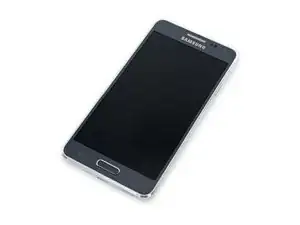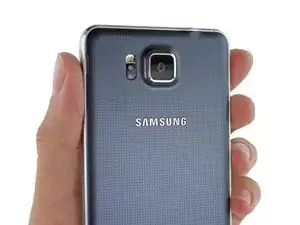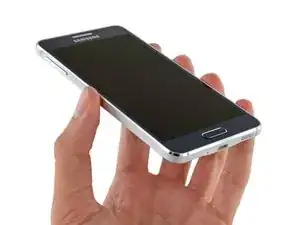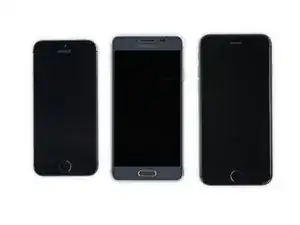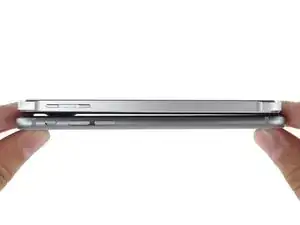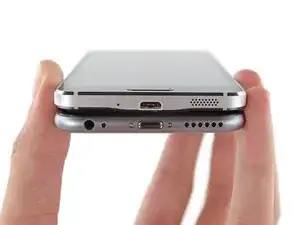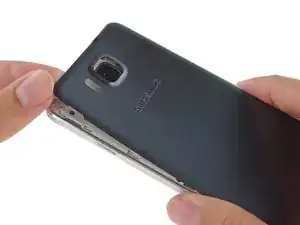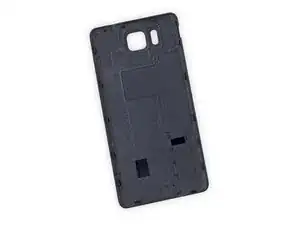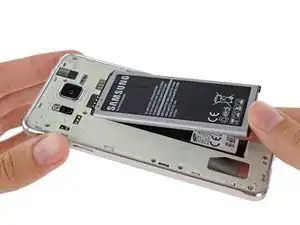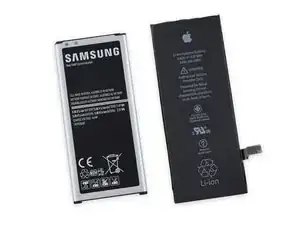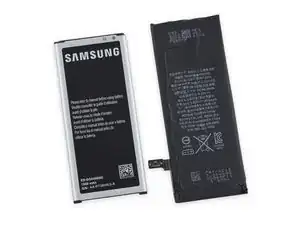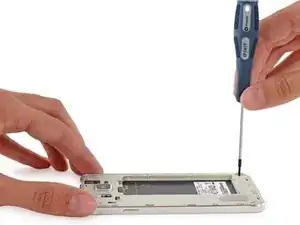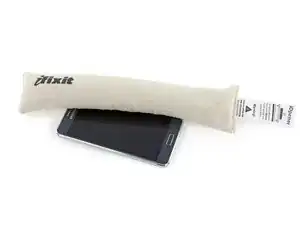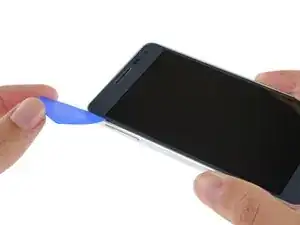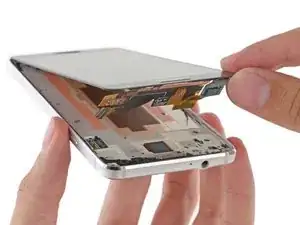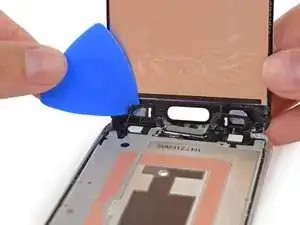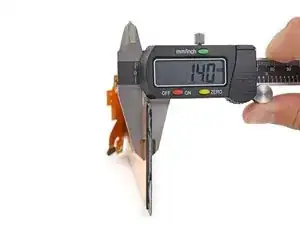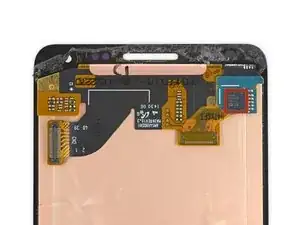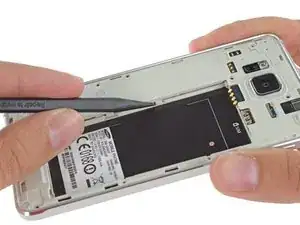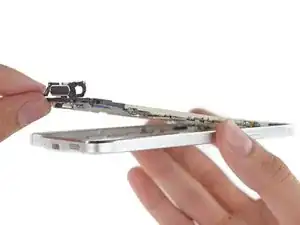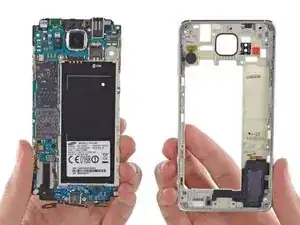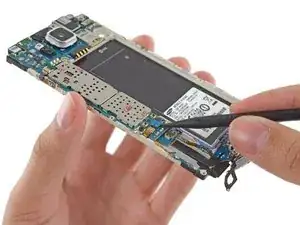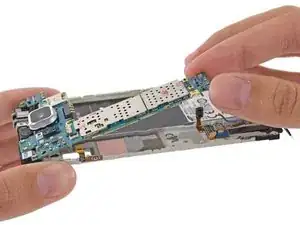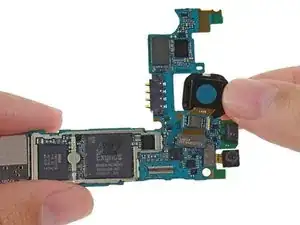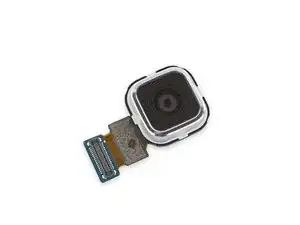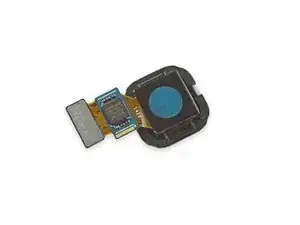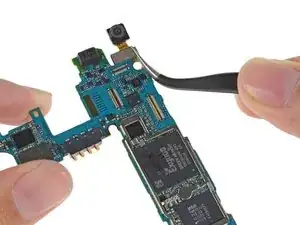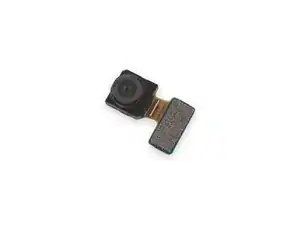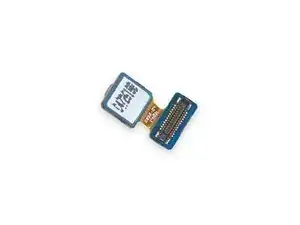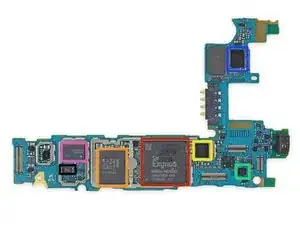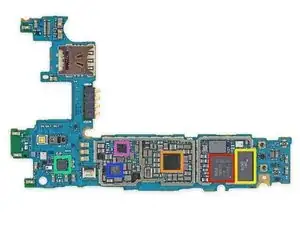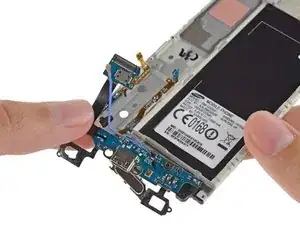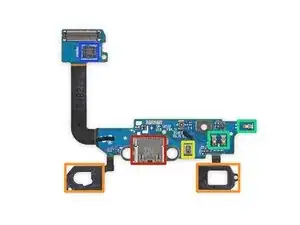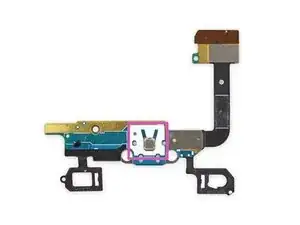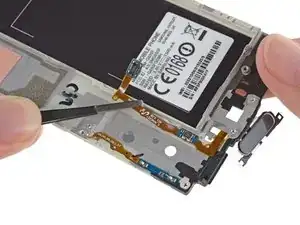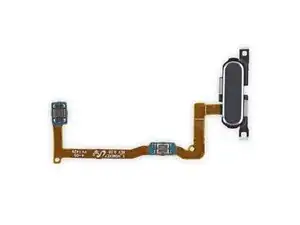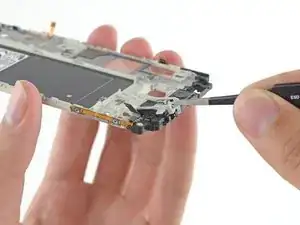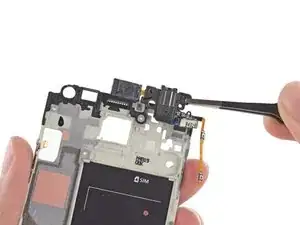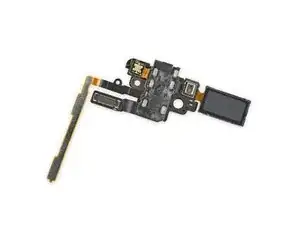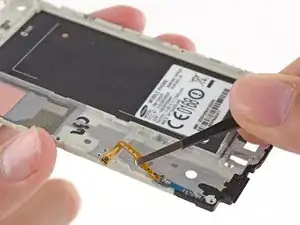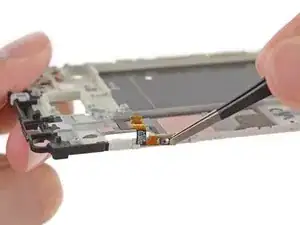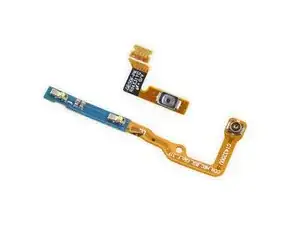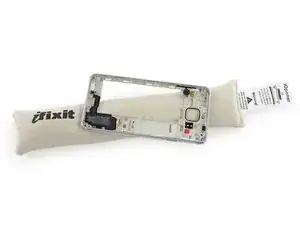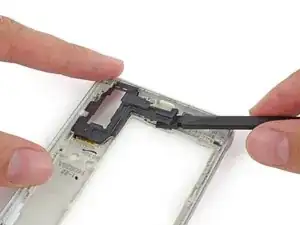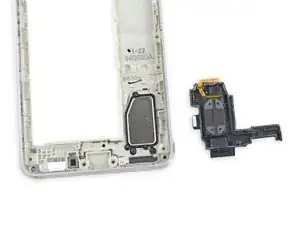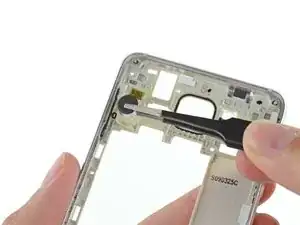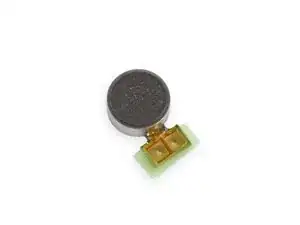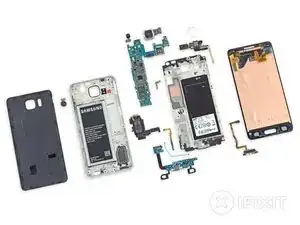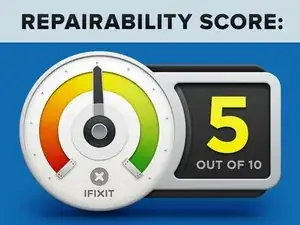Introduction
After years of research, billions of dollars, and countless hours of development, Samsung has finally landed upon the game changer in its race against Apple—a Galaxy smartphone with a metal frame.
This latest iPhone killer is certainly nice to look at and has the specs to back it up—but we're more interested in inner beauty. Tune in to see how the Galaxy Alpha stacks up where it really counts—on the inside.
Tools
-
-
Samsung Galaxy Alpha tech specs:
-
4.7" Super AMOLED display
-
Exynos 5 Octa 5430 system on chip (quad-core 1.8 GHz Cortex-A15 and quad-core 1.3 GHz Cortex-A7)
-
2 GB RAM + 32 GB internal storage
-
12 MP rear-facing camera + 2.1 MP front-facing camera
-
HR Sensor, Proximity Sensor, Geomagnetic Sensor, Fingerprint Sensor, Hall Sensor, Gyro Sensor, Accelerometer, Light Sensor
-
1860 mAh battery
-
-
-
Visible above the rear camera: a heart rate monitor. Useful when you need to monitor your heart rate from your smartphone.
-
Similar to the 4th and 5th generation iPhones, the Galaxy Alpha sports a straight, smooth metal bezel, with a chamfered edge.
-
Speaking of metal frames, let's hope Samsung learned from Apple's Antennagate fiasco.
-
Unlike the iPhone, the rear of the phone is covered in a rubberized plastic panel—which we'll be peeling off just as soon as we can.
-
-
-
A lineup for the ages. From left to right we have the iPhone 5s, the Galaxy Alpha, and the iPhone 6.
-
Many have called the Galaxy Alpha the iPhone slayer—so just how does it compare to the brand-new iPhone 6?
-
The Alpha's styling, with its straight sides, is more reminiscent of a 4th or 5th generation iPhone than the latest and greatest curved-sides-iPhone 6.
-
The Galaxy Alpha and iPhone 6 both have 4.7" screens; the differing bezel sizes account for the difference in size.
-
Samsung's signature oblong home button also lends to the slimmer frame, and probably reminds users it's not really an iPhone.
-
-
-
Stacking up the contenders: The Alpha managed to squeeze itself into a slightly smaller form factor than the iPhone 6—and at 6.7 mm, it's a whole 0.2 mm thinner.
-
We're sure you'll notice the difference.
-
The Galaxy Alpha and iPhone 6 look remarkably similar from below.
-
Speaker grille, data port (standard Micro USB 2.0 on the Alpha and proprietary Lightning on the iPhone), and microphone are in roughly the same places.
-
Spot the differences!
-
The iPhone's headphone jack is on the bottom.
-
None of those pesky Pentalobe screws on the Alpha. Proprietary screws are annoying, but any screws are better than the usual alternative—glue. What will this mean for repair?
-
-
-
The newest in a long line of Samsung Galaxy smartphones, the Galaxy Alpha still proudly features an easily removed rear cover and tool-less battery replacement.
-
Samsung's mothership, the Galaxy S5, was packed with glue and rubber gaskets, taking pains to keep your delicate pocket computer safe from a dip in a puddle.
-
The first evidence of waterproofing we found in the Galaxy S5 was a rubber o-ring embedded in its rear cover...
-
...which is clearly absent from the Alpha. So what happened here? Samsung's newest child clearly didn't inherit the much-touted IP67 standard.
-
-
-
With the cover dispatched, we pop out the battery with the greatest of ease.
-
The Galaxy Alpha's Lithium-ion battery is rated at 3.85 V and 1860 mAh, giving it 7.17 Wh of juice.
-
That's a pretty dramatic decrease from the 10.7 Wh battery in the Galaxy S5.
-
However the Alpha is closely matched with the iPhone 6, which runs at 3.82 V and 1810 mAh, (6.91 Wh).
-
-
-
How to get inside the Galaxy Alpha (or the Galaxy S5) in two easy steps:
-
Step 1: Remove screws from the back of the midframe.
-
Step 2: Cry about how that did absolutely nothing, and go grab your iOpener.
-
On the Galaxy S5, we saw Samsung move to a midframe sandwich design—two halves of an internal frame surround the motherboard under a display panel lid.
-
This sandwich and display-first-entry design stuck around. Even though the midframe screws are no longer hidden under the display, as in the S5, the procedure remains the same: difficult.
-
-
-
After plenty of heat and patience, we've finally softened the front panel adhesive enough to wedge an opening pick into a gap.
-
The pictures make it look easy—but we spent about half an hour heating and prying around the edge of the front panel until we were ready to lift it up without destroying anything.
-
-
-
The iPhone 6 and 6 Plus saw Apple rerouting this cable into the display assembly, to better protect it.
-
Samsung decided to simply detach the home button from the display assembly, so that its cable now routes down into the interior.
-
This eases the opening procedure a bit, but the capacitative touch button cables are still obnoxiously delicate and require painstaking precision to free.
-
-
-
The Galaxy Alpha features a razor-thin display assembly—less than half the width of the iPhone 6 front panel.
-
Riding on the back of the display assembly, we find the touchscreen controller, provided by STMicroelectronics.
-
-
-
Removing the screws from the back earlier did nothing—but now that they're out, we're free to pop open the midframe sandwich and get to the meat of the matter.
-
Releasing a few plastic clips lets us push the inner midframe and motherboard up and out of the outer frame (previously sealed by the display).
-
The speaker and vibrator stay with the outer midframe, connected to the motherboard by spring contacts.
-
-
-
Let's jump right in to the belly of the beast. With the midframe halves separated, only a few connectors and a single screw hold the motherboard in place.
-
-
-
The Galaxy Alpha is loaded with a hefty 12 MP rear-facing camera. Judging purely by sensor size, that's a step down from the Galaxy S5's 16 MP monster.
-
From the buzz on the nets, we gather that this camera is comparable to the S5's in quality if not quantity of pixels—and that both fall a little short of the iPhone 6's 8 MP camera, which has better low-light performance and color accuracy.
-
-
-
The lonely 2.1 MP selfie cam comes off the motherboard without issue.
-
Unlike the iPhone's now-standard mini cluster-mess of a front-facing camera cable.
-
-
-
A closer look at the Alpha's
wolfpackICs: -
Samsung Exynos 5430 SoC (labeled as KMR2W0009M)
-
Intel PMB9933 Baseband Processor
-
Maxim Integrated MAX77804K (System PSoC), making a return appearance from the Galaxy S5
-
Broadcom BCM4753IA1, likely GPS receiver
-
Wolfson Microelectronics WM5110E Low Power Audio System
-
RF Micro Devices RF8095 Multi-mode - Multi-band Power Amplifier
-
Skyworks 7851 Antenna Switch
-
-
-
Time to clean up and remove the last few pieces of the Alpha puzzle.
-
This daughterboard, located at the bottom of the device, is home to several components:
-
Micro USB 2.0 port
-
Capacitative touch soft buttons
-
Microphone
-
Antenna spring contacts
-
0055 1407 7899 (we suspect this is another Cypress CapSense capacitive touch-sensing controller, like in the Galaxy S5)
-
Home button switch (on the back)
-
-
-
Here's a rubber gasket, sealing the area around the headphone jack—presumably for protection from water damage.
-
The headphone jack's home is a blobular mess of a cable, akin to the iPhone's front-facing camera and sensor cable—with the noteworthy exception of the Alpha's front-facing camera living on its own.
-
On the Alpha's cable, we find the headphone jack, earpiece speaker, microphone, volume button switches, and an ambient light sensor.
-
-
-
With the inner midframe exhausted, we turn to the outer frame in hopes of freeing its speaker and vibrator for your inspection.
-
Probing and prying at the speaker reveals it's adhered in place much more strongly than we expected—essentially using the midframe as half of the speaker box.
-
Once again, the iOpener prevails, softening the tar-like adhesive enough that we can pop the noisemaker up and out.
-
-
-
Lastly, a boring ol' vibrator.
-
Looks like Samsung didn't get their hands on Apple's newest silent alert system, or they deemed it a silly investment.
-
-
-
Samsung Galaxy Alpha Repairability Score: 5 out of 10 (10 is easiest to repair).
-
The battery is incredibly easy to remove and replace.
-
The display is one of the first components out, making replacement a little faster. However, copious adhesive and ultra thin display glass makes the job tougher than ever.
-
Once you get the device open, several components are modular and fairly easy to replace, such as the cameras, power button switch, vibrator motor, and speakers.
-
The display assembly is held in with a significant amount of adhesive and requires very careful prying and a considerable amount of heat to remove without cracking the thin glass or cutting cables.
-
Replacing anything other than the battery requires first removing the display, risking extra damage on the way to a repair.
-
17 comments
Which company is providing the Gyro for the Alpha
Merci pour le travail.
sfian8 -
from the guide, I have an idea that the display assembly was only attached to the middle frame, so you can get to the mother board just by removing the screws without taking the display panel from the middle frame, and the internal components can be repair easily
am I right?
william -

